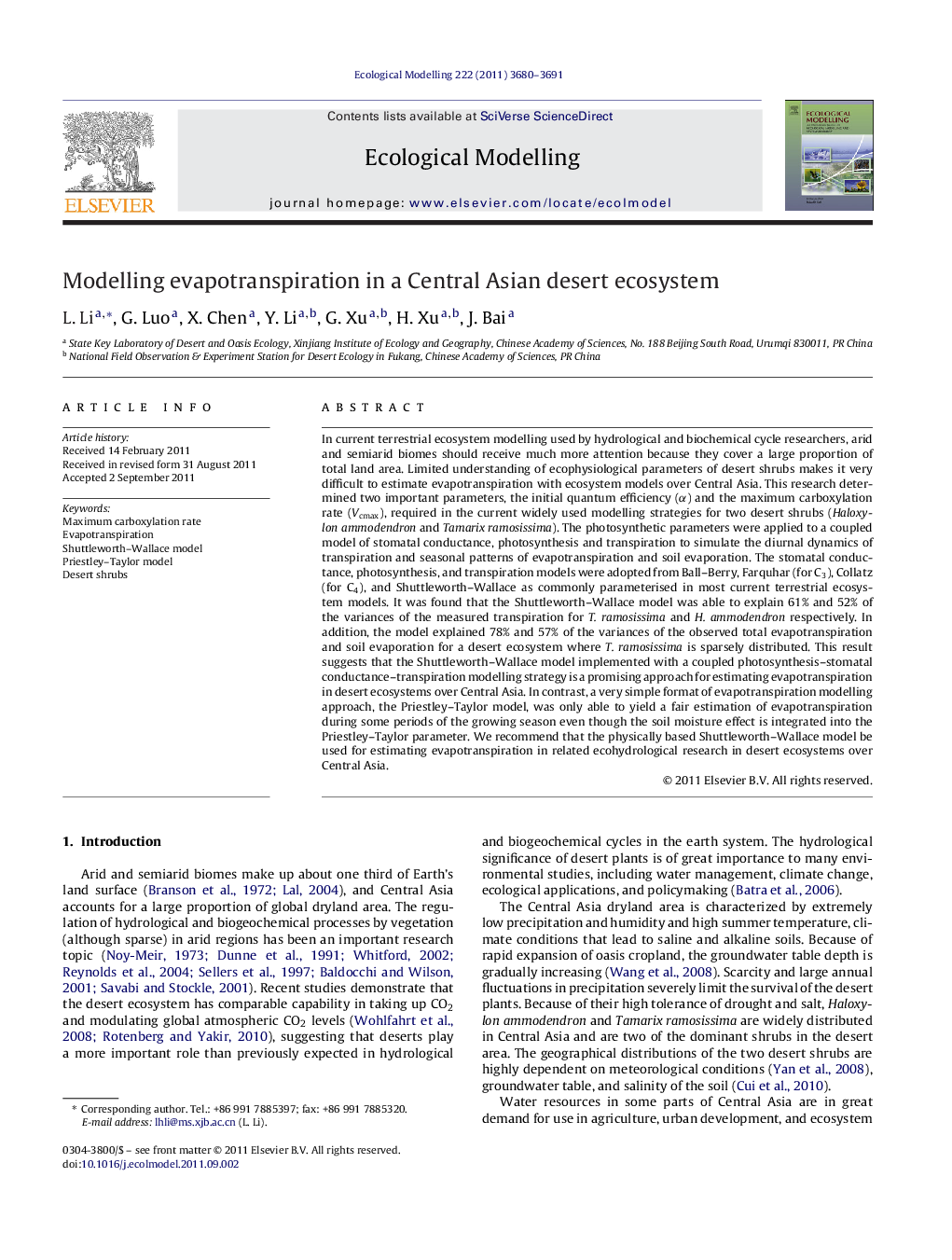| کد مقاله | کد نشریه | سال انتشار | مقاله انگلیسی | نسخه تمام متن |
|---|---|---|---|---|
| 4376616 | 1617520 | 2011 | 12 صفحه PDF | دانلود رایگان |

In current terrestrial ecosystem modelling used by hydrological and biochemical cycle researchers, arid and semiarid biomes should receive much more attention because they cover a large proportion of total land area. Limited understanding of ecophysiological parameters of desert shrubs makes it very difficult to estimate evapotranspiration with ecosystem models over Central Asia. This research determined two important parameters, the initial quantum efficiency (α) and the maximum carboxylation rate (Vcmax), required in the current widely used modelling strategies for two desert shrubs (Haloxylon ammodendron and Tamarix ramosissima). The photosynthetic parameters were applied to a coupled model of stomatal conductance, photosynthesis and transpiration to simulate the diurnal dynamics of transpiration and seasonal patterns of evapotranspiration and soil evaporation. The stomatal conductance, photosynthesis, and transpiration models were adopted from Ball–Berry, Farquhar (for C3), Collatz (for C4), and Shuttleworth–Wallace as commonly parameterised in most current terrestrial ecosystem models. It was found that the Shuttleworth–Wallace model was able to explain 61% and 52% of the variances of the measured transpiration for T. ramosissima and H. ammodendron respectively. In addition, the model explained 78% and 57% of the variances of the observed total evapotranspiration and soil evaporation for a desert ecosystem where T. ramosissima is sparsely distributed. This result suggests that the Shuttleworth–Wallace model implemented with a coupled photosynthesis–stomatal conductance–transpiration modelling strategy is a promising approach for estimating evapotranspiration in desert ecosystems over Central Asia. In contrast, a very simple format of evapotranspiration modelling approach, the Priestley–Taylor model, was only able to yield a fair estimation of evapotranspiration during some periods of the growing season even though the soil moisture effect is integrated into the Priestley–Taylor parameter. We recommend that the physically based Shuttleworth–Wallace model be used for estimating evapotranspiration in related ecohydrological research in desert ecosystems over Central Asia.
► Parameters for desert shrub evapotranspiration model were defined.
► Coupled photosynthesis–stomatal conductance–transpiration modelling scheme was evaluated for desert ecosystem.
► The Shuttleworth–Wallace model well captured the plant transpiration, soil evaporation and canopy evapotranspiration.
► The Shuttleworth–Wallace model performed better than the Priestley–Taylor model.
Journal: Ecological Modelling - Volume 222, Issues 20–22, October–November 2011, Pages 3680–3691